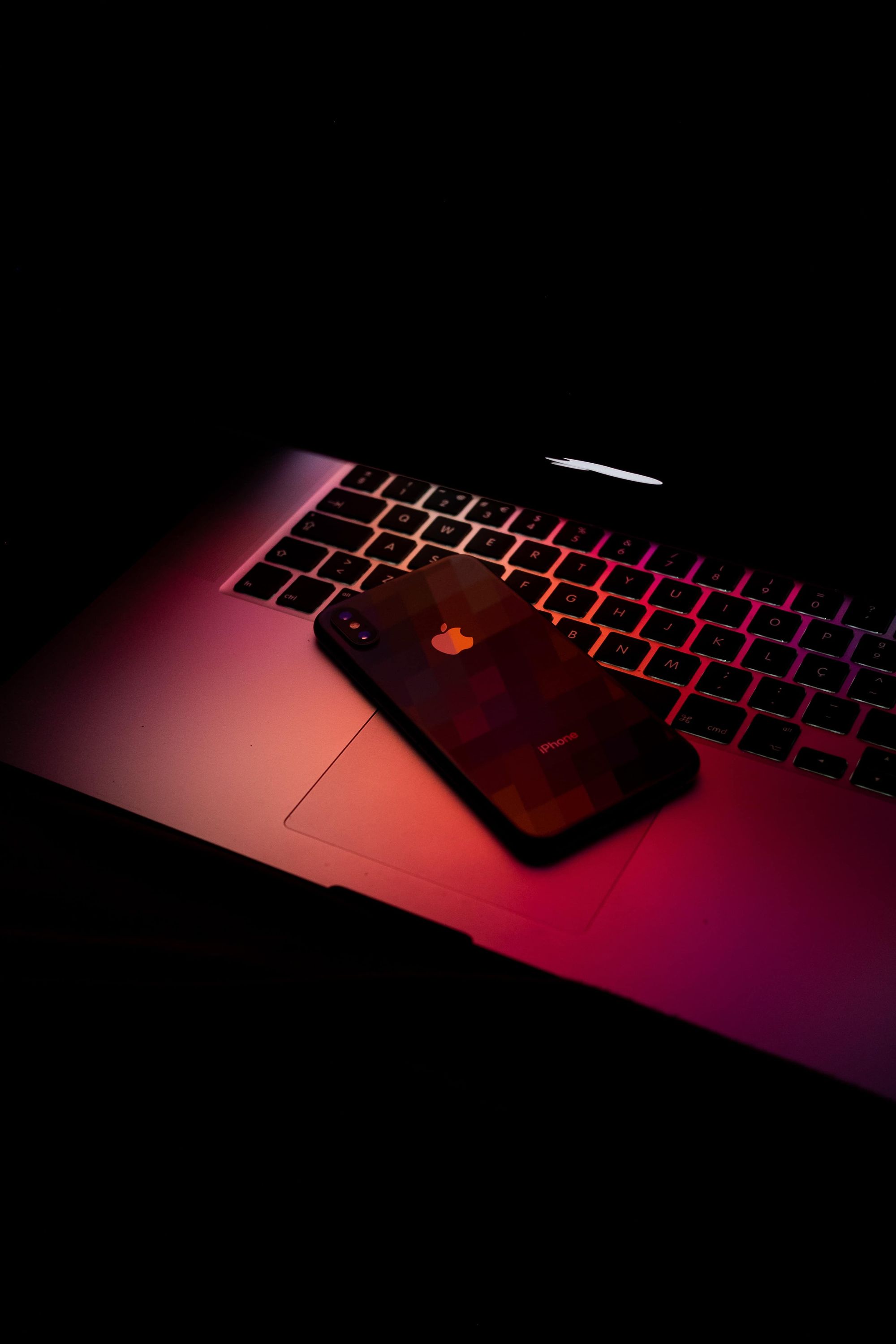It’s been law since 2017, yet 76% of us haven’t heard of it and official rollout has been pushed back multiple times. With a date set once again for 15 July, it’s really time we started talking about age verification and pornography
It may not be something we talk about openly or in polite company, but let’s be frank: a lot of us enjoy a bit of porn. Whether we’re watching it alone or with our partners, according to some sex therapists, pornography can actually be good for our relationships. Whether you're a fan of erotica, are sweet on softcore, or prefer your porn hot, hardcore and heavy, watching pornography can help us open up uncomfortable conversations. Whatever style tickles your fancy, it can help us to explore our own sexuality, and become more comfortable with our own needs and desires in a safe, relaxed, no-pressure setting.
There are many concerns that mainstream pornography can set unrealistic expectations, as well as showing unbalanced representations of sexual acts and completion, particularly in the disparity of men shown reaching orgasm (78%) compared to women (just 18%). Worries around our potential addiction to pornography, as well as rising conversations around the question ‘does watching porn count as cheating’ are all valid and serious concerns (though research shows very little evidence that porn harms our health), yet it still raises an uncomfortable question: will restricting our access to pornography really have the impact the government is intending?
What is the ‘Porn Ban’?

Would you hand over your personal details in exchange for watching porn? Soon, you won’t have a choice.
When asking around the office, none of my colleagues (many of whom keep up to date with news and politics thanks to the field we work in) had even heard of it. It’s unsurprising that we could be just a few short months away from being caught with our pants down.
According to the latest statistics from YouGov, over three quarters (76%) of us aren't even aware of the new government restrictions set to come into effect from 15 July. An estimated 35 million people could be affected by the new law, yet numerous surveys and polls have shown as a nation, we’re still unaware of what’s about to happen.
Originally proposed by the now-defunct regulator Atvod back in 2014, the new age verification process came into law as part of the Digital Economy Act of 2017, but is yet to be rolled out due to repeated delays.
From this July (barring any further delays), all viewers will have to prove they are over 18 and hand over their personal details before being able to access any pornography.
This may be in the form of an email address, credit card details, passport, drivers license, or other official ID.
To be fair, the ban sounds logical on the surface: age verification to help protect unsuspecting children and teens from stumbling across unsavoury videos, images, and fiction - who could be opposed to that? Yet once you get beneath the surface of the ban, things start to become unstuck.
Critics warn that new age verification may risk teenagers going to unsafe measures or through unsavoury routes to access pornographic materials, whilst others have raised the point that VPNs (a way of masking which country you are accessing the internet from) are still legal to use, allowing all users to completely bypass the new censor altogether. Not to mention the slightly confusing and contradictory age restrictions themselves, as we tell 16 and 17 year old’s it’s ok to do the deed itself - just don’t watch it.
It’s set to be the first block of its kind anywhere in the world, yet of the two thirds of Brits who supposedly support it, just one third actually think it will be successful. So how, exactly, have we got to this point? And how is it going to work?
How will it work?
The controversial new law will require internet service providers (ISPs) in the UK to block any websites deemed adult in nature, meaning users can only gain access after verifying their age. The exact details of how this will be implemented have been a little fuzzy, however it is expected that users may be asked to provide credit card details, a phone number, email address, or other form of official ID before being able to gain access.
Internet service providers and mobile networks alike will be required to block all websites that do not require age checks to access their content. The British Board of Film Classification (BBFC) will be responsible for enforcing this block, imposing fines of up to £250,000 for those who do not comply.
All sites that are classified as adult in nature (defined as sites that contain more than one third pornographic material including videos, photographs, and text) will be required to stop UK IP addresses from accessing them without first completing an age verification check.
However, sites will not have to comply with a single standard verification process. One option developed by MindGeek (the company behind major pornography sites including PornHub, YouPorn and RedTube), AgeID, will ask users to provide personal data to prove their age. Choosing from a list of third party providers, they will be able to opt to use SMS, their credit card, passport, or driving licence to verify their age. An expected 20-25 million UK users are expected to sign up using the free AgeID system according to the BBC.
Users are also expected to have the option of purchasing age-verification cards. Costing £4.99 to £8.99, these will be valid for use for 24 hours in single and multi device forms.
Other forms of verification will include AgeChecked (once verified through the app, it will allow users to have a single username and password across multiple sites), AgePass, and Yoti’s ProveMyAge tech (currently used by nightclubs and supermarkets).
What does age verification hope to achieve?
The main driving force behind age verification comes from government concerns around the ease of accessibility of pornographic content. Digital Minister, Margot James, was quoted as saying it is “completely unacceptable” how children can stumble onto pornography websites when online. But what are the potential wider-reaching effects that could come into play?

Risking an end to open discussions
A 2016 study commissioned by the NSPCC revealed 53% of 11-16-year-olds have seen sexually explicit content online, raising fears that children may become desensatised to ‘extreme’ or ‘violent’ pornography. The average age that children are first exposed to pornography is around 11 years old, “So it is understandable that 83% of parents recently polled by the not-for-profit organisation Internet Matters support age-verification on commercial porn sites.”
Should we be criminalising the watching of pornographic materials, or educating teenagers thoroughly on the difference between fantasy and reality? By imposing age limits, do we risk driving teens away from having open, honest discussions with us about what they are seeing, further impacting their ability to discuss any distressing materials they may encounter?
Data leak worries
Pornography can currently be seen by anyone, anywhere, with just a few clicks on their smartphone, tablet or laptop. Concerns run high not only around the upcoming ban’s effectiveness, but the potential hazards surrounding the privacy of users required to provide their ID to access these sites.
Big companies from Ticketmaster to Facebook have had major data breaches in recent years. With an expected 25 million users signing up for AgeID, concerns have been raised that this could potentially be an accident waiting to happen.
In 2015, hackers focused on Ashley Madison, an adult website where users seek extramarital affairs. Over 33 million accounts were stolen from the website, exposing tens of millions of people’s personal information and reportedly leading to two individuals completing suicide following the data leak. Just a year later, nearly 800,000 Brazzers users (another site from MindGeek, creators of AgeID) had their data stolen.
While some verification sites including AgeID have been quick to highlight that they “will not and cannot store any age verification data,” individuals are still concerned that their watching history may open them up to blackmail.
Level of effectiveness
The effectiveness of the restrictions themselves have been called into question. While sites containing more than one third of what is deemed to be pornographic material will require age verification checks, social media platforms including Twitter, Facebook, Tumblr, and Instagram will not, leaving children and teens just as likely to stumble across adult materials as they were previously. The BBFC will have no authority to shut down profiles dedicated to sharing pornographic imagery on these platforms.
Many sites and gaming systems already offer significant parental controls to block violent and pornographic materials, bringing to question why these could not be utilised further.
“The age block will be ridiculously easy to bypass - and if anyone knows how to circumvent restrictions, it’s a teenager” Arwa Mahdawi wrote recently.
With no limitations on VPNs as part of the new law, users will theoretically be able to continue masking from which country they are continuing to access their adult content, nullifying the effectiveness of the age verification process itself. Further concerns have been raised that the ban could drive younger users to more unsafe habits online, thanks to technology such as Tor allowing users to search online with higher levels of privacy, effectively masking their online activity.
Searching for pornography can be a normal, natural part of exploring your sexuality

A 2017 study by the NSPCC about sex education and relationships revealed 82% of 11-18-year-olds think that it’s “important to learn about the impact of pornography as part of relationships and sex education.”
Whether teens are seeking pornography out themselves as part of their exploration of their sexuality or are coming across it by mistake through dodge ads, misleading links and pop-ups, it’s important to make sure young people understand the impact pornography can have on a personal level, as well as how it can impact their relationships.
According to the NSPCC “It’s normal for young people to be curious about sex and relationships. The internet gives them a way to access information and get answers to questions they may feel uncomfortable about asking. We know that there are a number of other reasons young people may be accessing porn online.” The NSPCC have also gone on to address the law itself, saying it will “make it much harder for young people to access online porn, but won’t completely prevent it.”
We risk demonising pornography
Childline have already updated their own advice online to reassure under 18s that if they look at pornography online, they aren’t breaking the law; it’s up to the websites themselves to make sure underage viewers aren’t accessing it. But are we risking teens feeling even less likely to open up and speak out, if they are concerned about what they have seen, sought out, or stumbled across?
What are your thoughts on the upcoming porn ban? Do you think new legislation is doing enough to protect children and teens, or does the upcoming system sound more like a tick-box exercise? We’d love to hear your thoughts.
For more information on how to talk to children and young people about pornography, check out the NSPCC online hub, or for more information on helping young people stay safe online, check out the parent’s guide to helping kids and teens stay safe on social media over on Counselling Directory.


Comments